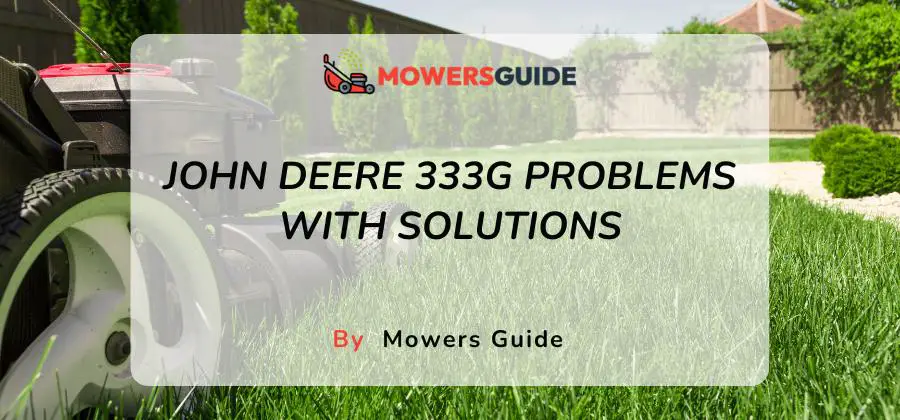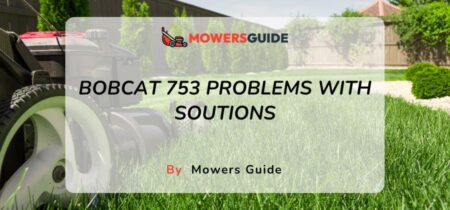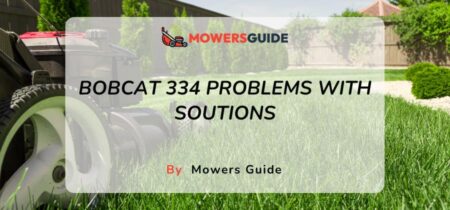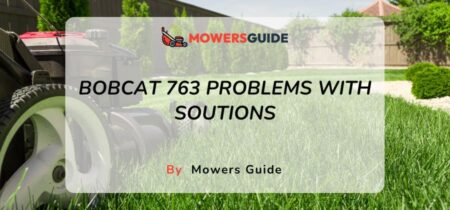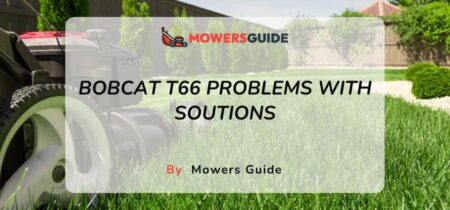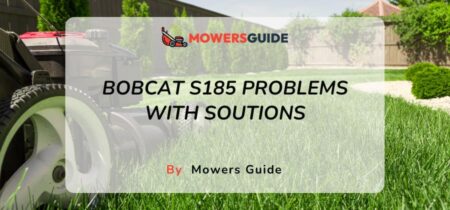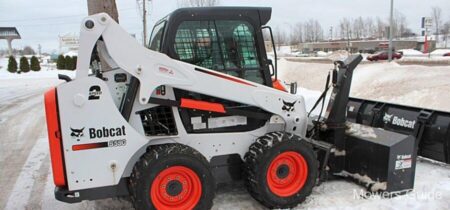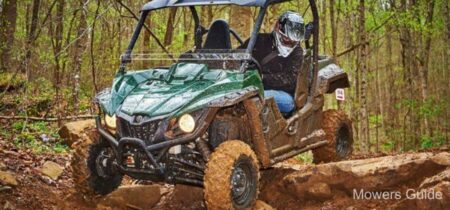You bought that shiny new John Deere 333G skid steer, thinking it would make your work so much easier. But now that new machine smell has faded and you’re left with a pile of problems. Hydraulic leaks, electrical shorts, engine trouble—it seems like everything is going wrong at once. With a little know-how, you can get your 333G up and running again.
In this article, we’ll walk through the most common John Deere 333G problems and show you step-by-step how to diagnose and fix them. Armed with the right tools and information, you’ll have that skid steer purring like new in no time.
8 Common Issues John Deere 333G Skid Steer With Solutions
Your John Deere 333G skid steer is a durable machine, but it still encounters some common problems over time. Many of these issues can be resolved with some troubleshooting and preventative maintenance.
1) Hydraulic System Failures
The hydraulic system powers most of the functions on your 333G, like the arms, bucket, and drive motors. If you notice the arms or bucket moving slowly or not responding, there may be an issue with the hydraulic pump, hoses, or valves.
Check the hydraulic fluid level first; it should be at the “full” line on the dipstick. Low fluid can reduce power and cause damage. Also, inspect hoses and valves for any leaks or damage and replace them as needed.
If your 333G’s hydraulic system is malfunctioning, it’s best checked by your John Deere dealer to test pressures and circuits. However, you can do some basic checks yourself. Ensure there are no leaks in hoses, cylinders, or pumps.
Check that the hydraulic oil level is full; low oil will affect performance. Clogged filters can also impact hydraulics. Replace hydraulic filters and breathers to ensure proper flow. A technician will need to identify and fix any malfunctioning pumps or valves.
Solution
If the lift arms won’t raise or the auxiliary hydraulics aren’t working, you may have a hydraulic fluid leak or pump issue. Check the fluid levels and refill if they are low. Inspect hoses and seals for damage or leaks.
Air in the hydraulic lines can also cause problems. Run the skid steer to circulate the fluid and bleed the air from the lines. If issues persist, the hydraulic pump may need repair or replacement.
2) Electrical Problems
The electrical system controls everything from the key switch to the instrumentation. If your 333G won’t start or the gauges aren’t working, there may be a problem with the alternator, fuses, relays, or wiring.
Carefully inspect the alternator belt to ensure it’s tight and not damaged or worn. Check all fuses and relays, and replace any that are blown. Inspect the wiring for any damage or corrosion and repair or replace the wires as needed.
If your 333G seems sluggish or underpowered, the problem is likely fuel- or air-related. Check the fuel filter for clogs; replace them if they are dirty. Make sure the air filter is clean to allow proper airflow.
A faulty fuel pump can also reduce power; have it tested to check flow and pressure. As a last resort, poor compression from worn piston rings or valves can sap power. Compression testing will need to be done to diagnose internal engine issues.
Solution
If your skid steer seems underpowered, the problem may lie with the fuel filters or fuel injectors. Clogged fuel filters reduce fuel flow, so replace them.
Faulty fuel injectors can’t properly atomize the fuel, reducing combustion. Have the injectors tested and replaced if needed. An air filter clogged with dirt and debris also reduces engine power. Replace the air filter.
3) Engine Issues
If your John Deere 333G is running rough, stalling frequently, or showing the “Check Engine” light, there could be an issue with the fuel, air, or emissions systems. Check for any codes stored in the engine computer to diagnose the problem.
Common problems include clogged fuel filters, bad O2 sensors, faulty EGR valves, or blown head gaskets. It’s best to have engine problems checked by a certified John Deere mechanic to properly diagnose and repair the issue.
If your 333G won’t start, the first things to check are the battery and fuel. Make sure the battery terminals are clean and tight and the battery is fully charged. Check that there’s fresh fuel in the tank; old or contaminated fuel is a common cause of hard starts.
If the engine still won’t turn over, it could indicate a faulty alternator or starter. Have your John Deere dealer test them to determine if a replacement is needed.
Solution
If your 333G won’t start, the issue could be a dead battery or alternator. Check that the battery connections are tight and clean, and try jumpstarting the engine.
If it starts, have the alternator and battery tested. It could also be a faulty fuel pump or ignition system. Check for error codes with a diagnostic scan tool to determine the cause.
4) Fuel Filter Choking Problems
It might power on, but in a matter of seconds, the machine would crumble. It could be that the throttle doesn’t work at all. The engine runs at its maximum RPM for an endless amount of time after being turned on. Engines may slow down if they are warmed up by running at low RPM. Furthermore, you might never hit the fastest speed.
Some of the causes of fuel filter joking issues include the following: See those if you can.
You could have a clogged gasoline filter. Particles in the tank, such as algae, could clog the gasoline collection tube when it is installed, preventing fuel from flowing freely.
Though not a guarantee, there may be issues with the fuel filter and lines.
Solution
You must first remove the fuel nozzle to address the problem. After that, feel free to launch it into the air. After that, put it back into the fuel water separator tank.
Make sure the mesh size of your inline filter is not less than what is necessary. You can make sure of that by matching the mesh’s rating.
5) Control System Issues
Users of the John Deere 333G also often experience this problem.
The John Deere 333g machines’ loader and steering joysticks may stop working. Issues with the control system follow.
Solution
Should you run into these problems, you might need to tighten or reconnect the connections at the loader or steering wheel.
Additionally, double-check the wiring that goes from the joystick to the actuators and the hydraulic pump as a safety precaution.
It is possible, though, that you have exhausted all other options. The joystick control circuit board still doesn’t appear to be functioning. If that’s the case, you might need to replace the entire gadget.
At times, the controls exhibit a delayed response. The John Deere 333G safety switches are what you should be looking at. Remember to double-check the previously mentioned connections in addition to that.
If these safety switches malfunction, the control system will be impacted. The switches will not function properly if any of the connections are not tight.
Lastly, check for any discharge in the battery by inspecting it. This is critical because malfunctioning circuits could harm the control system as well.
6) Parking Brake Issues
In addition to several electrical issues, the parking brake creates an extra degree of complexity.
With its gear, the brake rotor and the skid loader can be disassembled. The seat belt lights allegedly remained “on” even after the parking brake was released, according to certain users.
Snapping springs can cause the electrical harness to get too short, which can jam the lock. The machine is useless if the solenoids are not switched off.
Solution
The answer to these brake problems is very straightforward. First, take the seat and safety belt off. Locate a broken spring in the brake system that is between one and a half inches long. If the spring is broken, the brake will not release or disengage completely.
If any of the seat switches, belt switches, or solenoids are broken or damaged, think about replacing them. It may also be necessary to replace the wiring harness.
7) Excessive Vibration
Excessive shaking, rattling, or vibration in your 333G can indicate several issues. Unbalanced or damaged tires are a common culprit. Have tires rebalanced or replaced. Loose or worn bushings, bearings, or ball joints can also cause vibration.
Inspect the suspension and steering components for wear or damage and replace them as needed. For vibration at higher speeds, it may point to a bent or unbalanced drivetrain shaft. Check drive shafts, axles, and U-joints for damage or runout. Intense vibration may also indicate engine issues, which your John Deere technician must diagnose.
Solution
When something fails or is wearing out, vibrations usually start, and you don’t want to ignore that for too long. Replacing a bearing is far less expensive than replacing a bearing and its castings. It’s not something you want to put off for too long because a disastrous breakdown could occur.
Have it checked out thoroughly because excessive vibration on the tractor may cause something else to go out of balance.
8) Overheating
An overheating 333G can damage components, so address the problem immediately. Check the coolant levels and refill if they are low. A malfunctioning water pump or fan won’t properly cool the engine. Have them tested, repaired, or replaced.
A clogged radiator prevents heat transfer, so clean out any debris. Head gasket or cylinder head damage can also cause overheating. Have a dealer inspect the engine for any internal issues.
Solution
With some troubleshooting and TLC, you’ll get your John Deere 333G skid steer back to working order in no time.
Performing regular maintenance like fluid changes, filter replacements, and inspections will also help prevent future problems and keep your equipment running strong.
Conclusion
Now you understand the top 8 problems to watch out for with the John Deere 333G skid steer. This machine can be a real workhorse when maintained properly, but like any equipment, it’s got its quirks.
The good news is that most issues can be prevented or fixed pretty easily if caught early. Just keep an eye and an ear out for leaks, odd noises, and error codes, and don’t ignore routine maintenance. And if something does go wrong, at least now you’ve got a handy guide to the most likely culprits. With a little TLC, your 333G will keep working hard for years to come.
FAQs
What is the John Deere 333G’s DEF?
Your John Deere 333G’s DEF tank is crucial, and it needs to be inspected frequently. In essence, your DEF functions as an exhaust system trash can. Lift the machine’s back latch to gain access to the tank. Then, you can open the cap to check the levels—diesel exhaust fluid is color-coded blue.
What is the horsepower of a 333G?
More power is available with the 100-horsepower 333G Compact Track Loader, which still has remarkable lift height and reach. See all of its features and get a brochure to print. Maximum Rated Weight: 1,680 kg (3,700 lb.)
How fast can a John Deere 333G travel?
Strong pushing forces and bucket breakout forces provide the leverage and tractive effort needed to move heavy loads, power through piles, and carve out clay. Two-speed drivetrains, which are optional on the 325G but standard on the 331G and 333G, provide travel speeds of more than eight mph for rapid work cycles.
Related Post:
- 7 Common John Deere RSX 850I Problems (Solutions Included)
- 7 John Deere 320 Skid Steer Problems (Solutions Included)
- 14 John Deere Gator 620i Problems (Solutions Included)
- Cub Cadet vs John Deere vs Husqvarna – Choosing the Best
- 8 Common John Deere 5075E Problems (Solutions Included)
- Craftsman vs John Deere Riding Mower (Comparison Guide)
- 6 Common John Deere 3025E Problems (Solutions Included)
- 8 Common John Deere 5075E Problems (Solutions Included)
- 9 Common John Deere X300 Problems (Solutions Included)
- 9 Common John Deere X350 Problems (Solutions Included)
For more outdoor vehicle problems solutions visit here and for more guides related to mowers visit Mowers Guide

